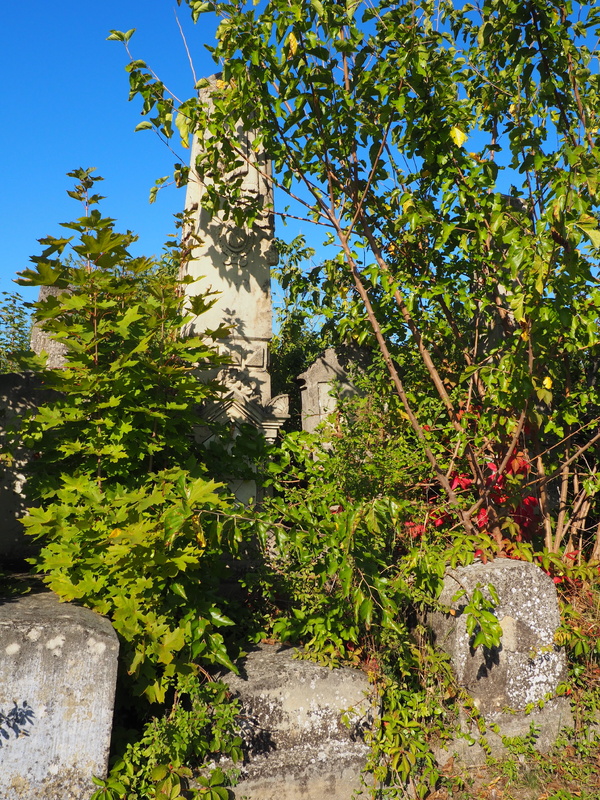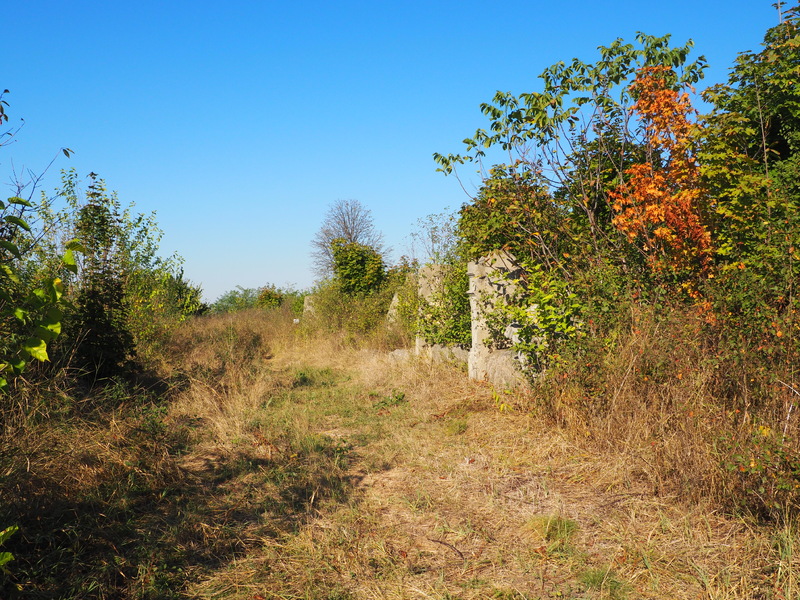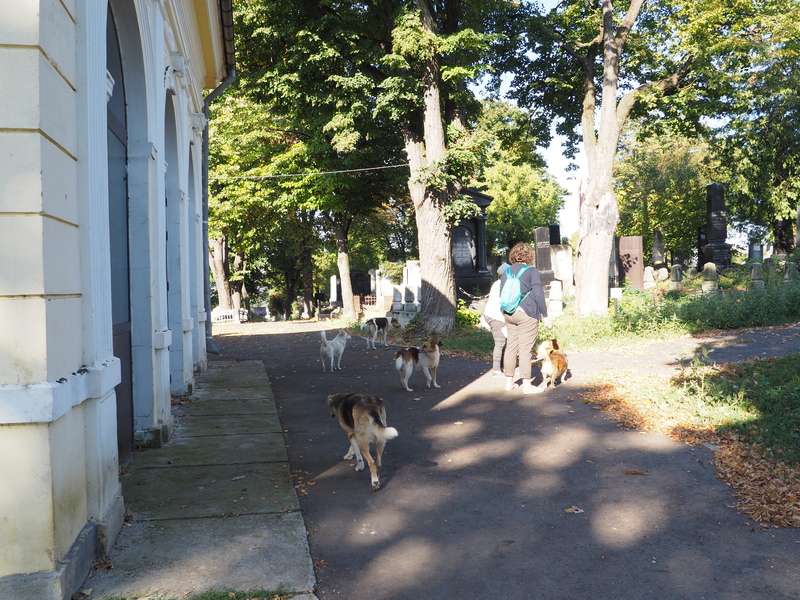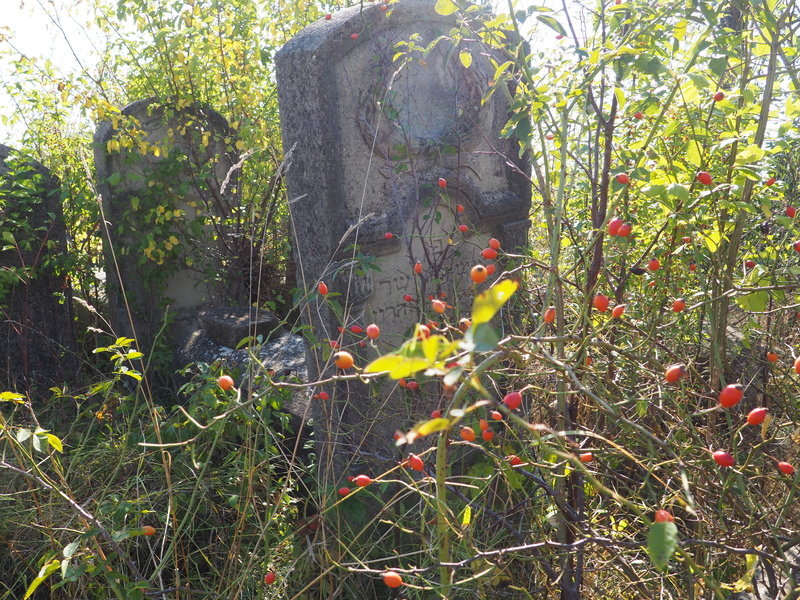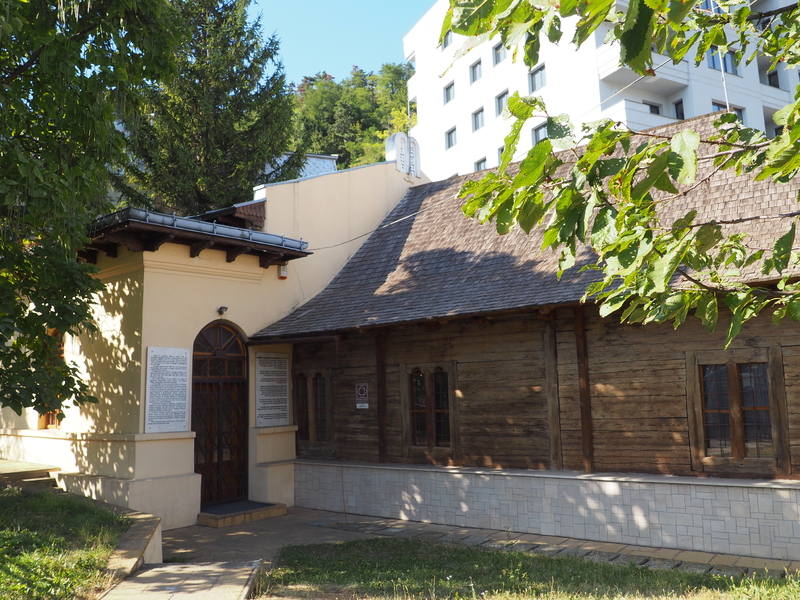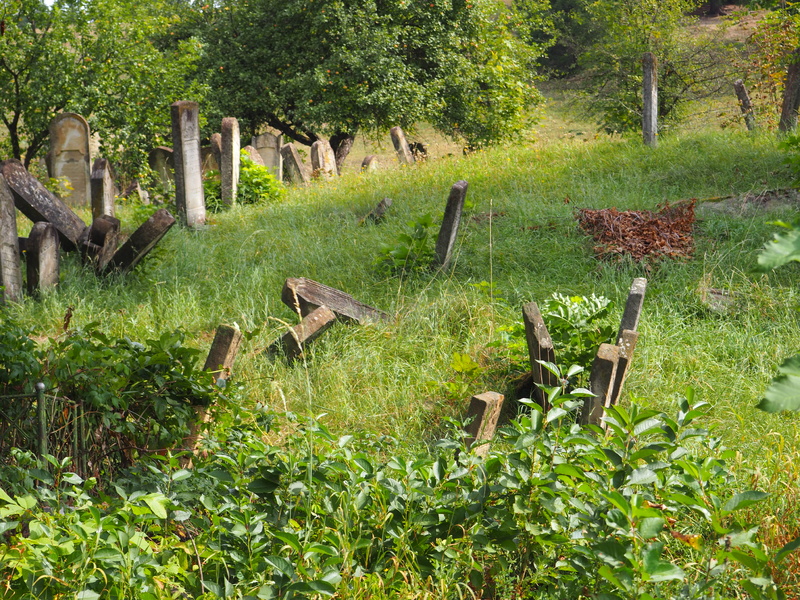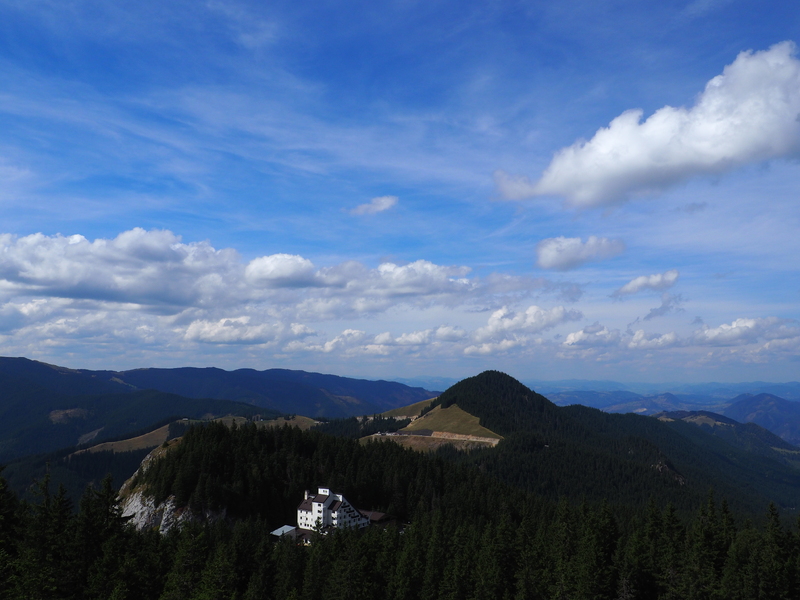Cimitirul Evreiesc (Jewish Cemetery)
Cimitirul Evreiesc (Jewish Cemetery)
Stefana and I drove up to the Jewish Cemetery. The gravestones sprawl over a vast area of thorny weeds. Many of the stones are knocked over or tilted and are mostly overgrown by brambles, bushes and trees.
The caretaker is an older woman of indeterminate age, who walks with a pronounced limp. She has four or five dogs who follow her around. The caretaker's father originally took care of the cemetery, Stefana's professor told me when we met, so this has been a life-long vocation. Stefana and I walked up a long dirt road, to where the graves of my great-great grandparents might be. Lining the road were headstones that
Despite the hot sun, the brambles and the thick trees overtaking the gravestones, I felt a fascination with the place and stayed for quite a while. I took in the experience of the damaged cemetery, and my feeling of complete helplessness in that environment. This place felt foreign to me and full of ghosts.
It was the end of the week, and the caretaker advised it would take time to search for Rebecca Marcovici's gravestone. There was no access again to the cemetery until Monday and so I traveled instead to see what I would find in Piatra Neamt and its environs. Arriving in Piatra Neamt in the afternoon, it was sunny and hot, and I found the entrance of the synagogue locked. In 2019 I had not yet discovered my cousin Emil, who it turns out, is the president of the Jewish community in Piatra Neamt, and so I continued on.
Exploring Bukovina, a mountainous region which is divided between Ukraine and Romania, I ended up in Gura Humorlui, where I searched for signs of its former Jewish community. Upon my return home, when I showed some slides to some friends in the Jewish community in Victoria, one friend exclaimed that his aunt had been from the small shtetl there. Most of the Jewish people of Gura Humorlui were deported to Transnistria, Romania's killing fields, strating in 1940 by the terrorizing Iron Guard (Yad Vashem, 2004). I searched for where the map showed the Jewish cemetery would be, but only saw a row of houses, one, with a woman working in her garden out front. Using my almost completely limited Romanian I asked "Unde este Cimitirul Evreiesc" (where is the Jewish cemetery?) and was then pointed to a gate behind her house, leading up a hill. In the end, my most significant encounter in Bukovina was yet another cemetery in shambles.
I returned to Iași the next Monday morning, and ventured back to the Iași Jewish cemetery, this time alonge, hoping to find Rebecca Marcovici's grave. I decided to take a taxi as I was afraid I would get lost. The driver also did not know how to gert there,, and finally dropped me on a dirt road on top of a hill overlooking the far end of the property. I climbed through a gap in the fence at the back of the property. The summer sun was hot and I walked alone, searching for the entrance.
I finally found my way through thorn bushes and trees growing over tombstones and overgrown brush, down the hill, until I located the main part of the cemetery. There were two older Israeli women appearing to be in their 70s there, one originally from Botosani, Romania, and one originally from Iașiwho was there to visit her grandmother's grave. The caretaker was leading them. The ladies spoke Romanian and Hebrew so I managed to communicate in Hebrew and I followed. The woman from Iași was very moved when we arrived at her grandmotgher's grave and afterwards she was crying and stumbling on her high heeled sandals. I held her hand and helped her get back on the main path.
The two ladies translated for me, as the caretaker only speaks Romanain, to help me ask the caretaker to show me the way to my great-great grandmother Rebecca Marcovici's grave. At that point, the caretaker refused to take me there, saying it was too difficult. When I protested the caretaker said we would need a taxi and I need to pay her 200 lei (about $50.00). Oddly enough, the two ladies had arrived with their taxi driver who agreed to drive up the dirt road, which was very rough and lined with old broken tombstones, toward Rebecca's grave. We proceeded forward, however, after only a moment the car could not go further.
